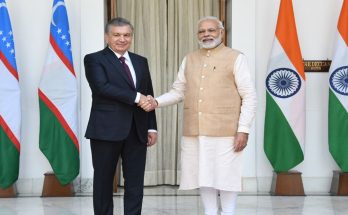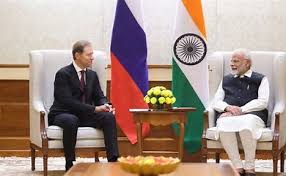 Ending months of vacillation, the Indian government has finally approved the Mumbai-Ahmedabad bullet train corridor project, signifying a new speed and energy in India-Japan relations ahead of Prime Minister Shinzo Abe’s three-day trip to the country starting December 13.
Ending months of vacillation, the Indian government has finally approved the Mumbai-Ahmedabad bullet train corridor project, signifying a new speed and energy in India-Japan relations ahead of Prime Minister Shinzo Abe’s three-day trip to the country starting December 13.
The flawless safety record of the Shinkasen system, coupled with a generous loan package, the Make in India plan of localized production and the promise of transfer of technology, decisively tipped the scale in favour of Japan in a high-stakes, high-value project which was also coveted by Japan’s rival China.
Japan has offered to lend India 81 per cent of the USD 15 billion project. The two sides are expected to sign a formal agreement after talks between Prime Minister Narendra Modi and Mr Abe in New Delhi. The pact will spell out the modalities, including the rate of interest, the proportion of localized production and the implementing agency.
The bullet train between Mumbai and Ahmedabad is expected to cut down the travel time from 7 hours at present to 2 hours. The Mumbai-Ahmedabad corridor and the Delhi-Mumbai corridor are a part of the diamond quadrilateral connecting India’s top four metropolitan cities of Delhi, Mumbai, Kolkaata and Chennai.
Offering to finance India’s first bullet train, estimated to cost USD 15 billion at an interest rate of less than 1 percent, Japan has edged out China in winning the contract. After studying the feasibility of the project, Japan concluded that it would be technically and financially viable. Construction of the high-speed railway link will start from 2017 and will be completed in 2023, according to a report in the Nikkei business daily. Japan’s decision to offer finance has made it the clear frontrunner in the project to build and supply the route.
Over the next few years, up to 70-80 percent of the components could be manufactured in India. Offering technical support, the Japanese government was willing to drive the local manufacturing and technology transfer initiative within a specified period. This move would bolster India’s manufacturing ambitions as well.
Author Profile
- India Writes Network (www.indiawrites.org) is an emerging think tank and a media-publishing company focused on international affairs & the India Story. Centre for Global India Insights is the research arm of India Writes Network. To subscribe to India and the World, write to editor@indiawrites.org. A venture of TGII Media Private Limited, a leading media, publishing and consultancy company, IWN has carved a niche for balanced and exhaustive reporting and analysis of international affairs. Eminent personalities, politicians, diplomats, authors, strategy gurus and news-makers have contributed to India Writes Network, as also “India and the World,” a magazine focused on global affairs.
Latest entries
 DiplomacyOctober 4, 2025UNGA Resolution 2758 Must Not Be Distorted, One-China Principle Brooks No Challenge
DiplomacyOctober 4, 2025UNGA Resolution 2758 Must Not Be Distorted, One-China Principle Brooks No Challenge India and the WorldJuly 26, 2025MPs, diplomats laud Operation Sindoor, call for national unity to combat Pakistan-sponsored terror
India and the WorldJuly 26, 2025MPs, diplomats laud Operation Sindoor, call for national unity to combat Pakistan-sponsored terror India and the WorldJuly 25, 2025When Fire Ends, Diplomacy Begins
India and the WorldJuly 25, 2025When Fire Ends, Diplomacy Begins India and the WorldJuly 16, 2025Operation Sindoor and its Aftermath: India’s Successful Diplomatic Outreach
India and the WorldJuly 16, 2025Operation Sindoor and its Aftermath: India’s Successful Diplomatic Outreach







